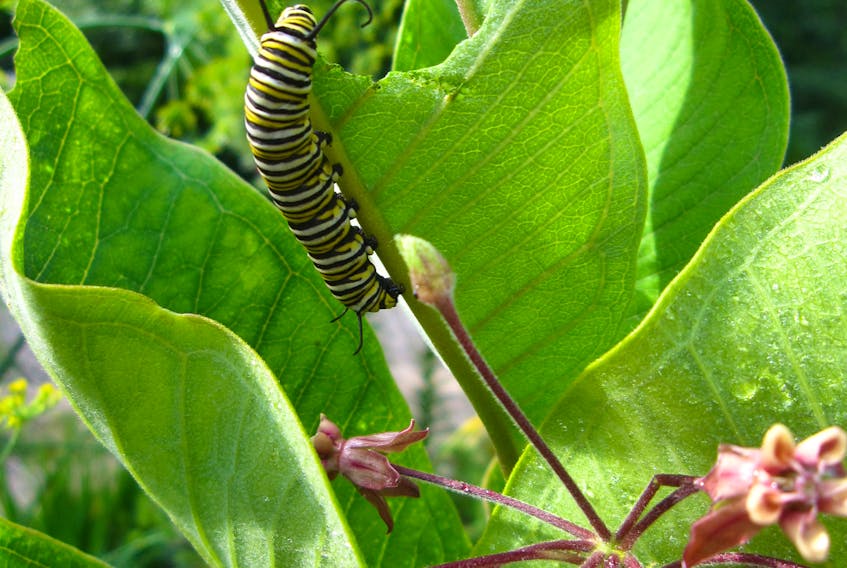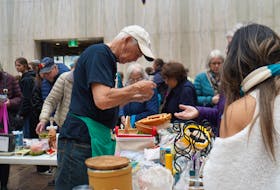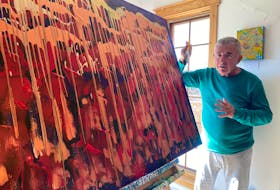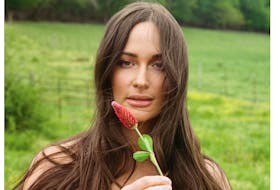Pollinators. About a third of our food is pollinated by them, so it makes sense to protect them and enhance their population. Many of them are either at-risk, like the Monarch butterfly, or endangered like the rusty-patched bumblebee, which has not been seen since 2010.

Canadian gardeners have recently taken a serious interest in the problem and have responded by planting species that support native pollinating insects and birds.
In your backyard or balcony, there are many opportunities to attract pollinators to enhance the pollinator corridor that connects the city and suburbs to green spaces beyond. Think of a corridor like a chain of refuge spaces for travelling pollinators. Every gardener can form a link in this important chain.
Here is a list of our recommended pollinating plants. This being prime planting season, there is no better time than now to get many of these plants in the ground.
Annuals – flower for many weeks but die with the autumn frost.
Lantana (Lantana camara) – A butterfly and bee magnet. One of the most colourful plants you grow in a full-sun garden. Loves to be hot and on the dry side. Too much water is the enemy. Brilliant colours that illuminate any container or garden.
Salvia (Salvia splendens) – Blue, white, orange or red. A sturdy annual that attracts hummingbirds. Sun-loving.
Lobelia (Lobelia erinus) – Another hummingbird plant that looks great hanging over the edge of a basket or window box. Half-day to full-sun. Blue or white.
Hibiscus (Hibiscus rosa-sinensis) – The Chinese hibiscus is likely what comes to mind, the tropical, woody plant featuring trumpet-shaped flowers almost 12 centimetres wide and 20 centimetres deep. Attracts butterflies and hummingbirds. Flowers are pink, red and orange. If you are thinking of the winter-hardy type, rose of sharon (Hibiscus syriacus), they work well too, but bloom later in the season.
Perennials
Our No. 1 pick is cardinal flower (Lobelia cardinalis), also called perennial lobelia. There are native species and hybrids to choose from. Both work well as pollinator magnets.
Milkweed (Asclepias incarnata) – The primary source of nutrients for monarch butterflies. While in flower, they also attract hummingbirds, flies (yes, they are pollinators also) and other types of butterflies.
Joe Pye weed (Eutrochium purpureum) – Some are hybridized cousins to milkweed and others are native, this hardy perennial blooms from mid-summer to late fall and attracts a host of pollinating insects. At its peak, late August/September, it literally dances with pollinators gobbling nectar and pollen. Fun to watch.
Agastache (Agastache foeniculum) – Native yellow hyssop and purple giant hyssop work well as does the introduced varieties that bloom their heads off for weeks at a time beginning in early summer. Showy plants that need some space, best at the back or the middle of a flower bed.
Stonecrop (Sedum) – Profuse bloomer August through October. Mark grows about 50 of these in his 10-acre garden. On a sunny day, you cannot miss the bees and butterflies that flock to them. Magenta, purple, red and rose coloured. Love the hot sun and dryness.
Shrubs
Elderberry (Sambucus canadensis) – Late in spring and early summer, the creamy-white flowers of the native common elderberry attract many native bees. When the plants produce fruit, later in the summer, songbirds enjoy a quick meal. If you want to pick elderberries, you had better be quick.
There are many other flowering plants that are suitable attractants for pollinators. We encourage you to take the time to do some foraging of your own, through the inventory at your local garden retailer.
Mark Cullen is an expert gardener, author, broadcaster, tree advocate and member of the Order of Canada. His son Ben is a fourth-generation urban gardener and graduate of the University of Guelph and Dalhousie University in Halifax. Follow them at markcullen.com, @markcullengardening, and on Facebook.









